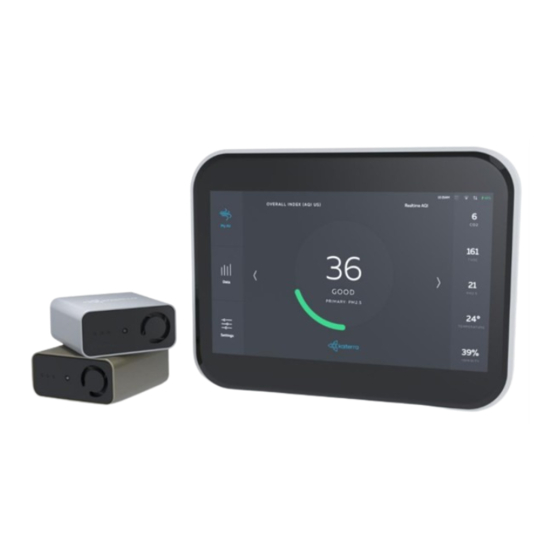
Advertisement
Advertisement
Table of Contents

Subscribe to Our Youtube Channel
Summary of Contents for Kaiterra Sensedge BACnet
- Page 1 Kaiterra www.kaiterra.com Kaiterra Sensedge BACnet User Manual JUNE 2022...
- Page 2 Kaiterra www.kaiterra.com Introduction The Kaiterra Sensedge is a smart air quality monitor that supports multiple communication methods, including BACnet. BACnet, acronym for "Building Automation Control Network", is a communications protocol for Building Automation and Control (BAC) defined by the ANSI/ASHRAE Standard 135-2004. The protocol defines a model for building-automation, describing the interaction between devices and systems.
- Page 3 Kaiterra www.kaiterra.com Setting up BACnet on the Sensedge A. Turning on BACnet By default, the BACnet feature on the Sensedge is not turned on. Navigate to Settings –> Device Details –> Connectivity –> BACnet/IP to turn on the feature. B. Setting the Device ID On the Settings –>...
- Page 4 Kaiterra www.kaiterra.com The UDP port can also be customized and can be any round number in the range of 47808 – 47823. It is recommended that the UDP port stays unchanged, since the default value is widely used. Please consult with your BMS admin before changing the UDP port.
- Page 5 Please consult with your network admin if you have question regarding your local network. Protocol Implementation Conformance Statement (PICS) PICS is a standard documentation that includes all the parameters and information you may need to set up your BACnet connection. You can find the PICS document on support.kaiterra.com.
- Page 6 Kaiterra www.kaiterra.com Frequently Asked Questions (FAQ) Can BACnet be daisy-chained (looped)? No. While BACnet MS/TP is wired in a daisy chain configuration, we support BACnet/IP and, for that, daisy-chaining does not apply: it would mean daisy-chaining Ethernet, which we do not support as it would require two Ethernet...









Need help?
Do you have a question about the Sensedge BACnet and is the answer not in the manual?
Questions and answers